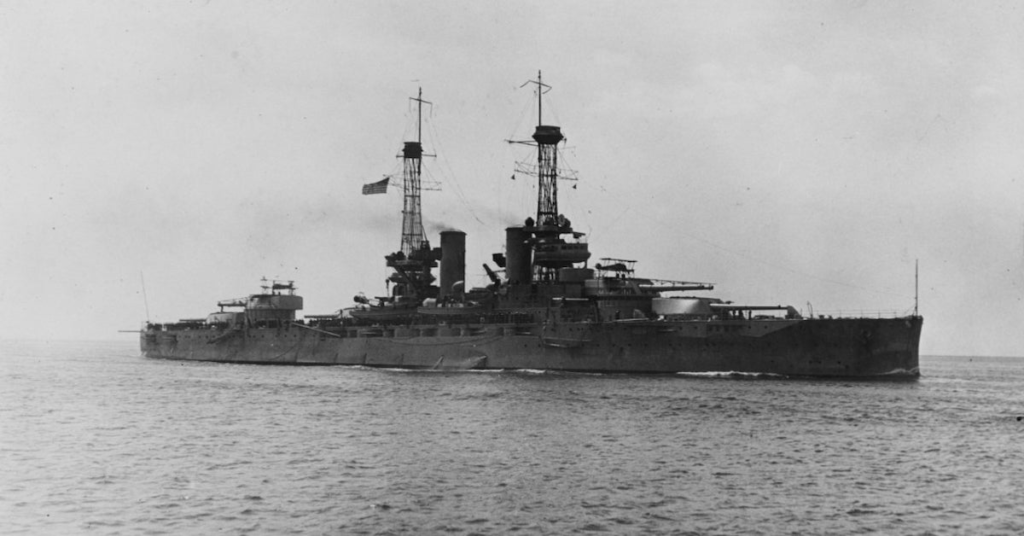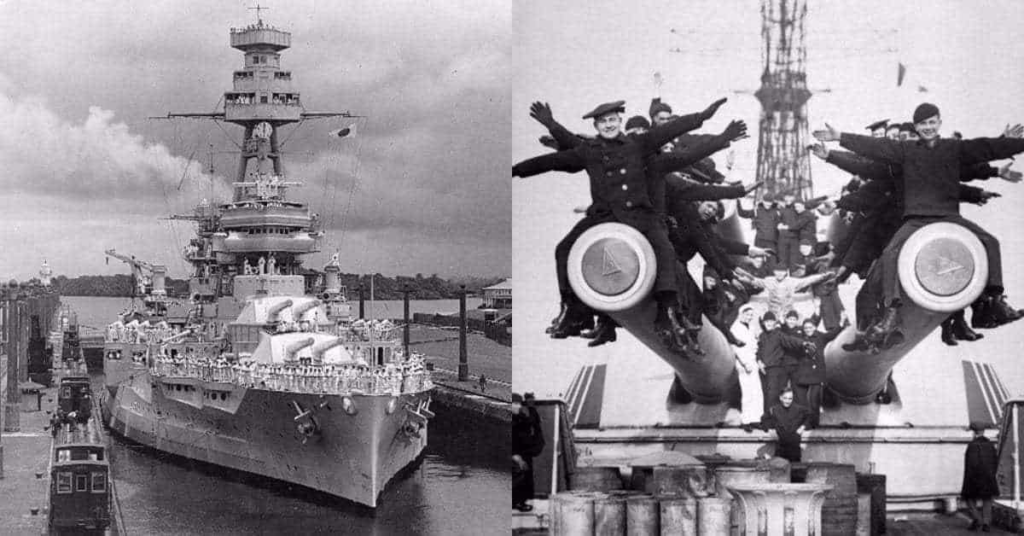USS Texas (BB35) is being towed from her berth near the San Jacinto battleground in La Porte Texas to a shipyard in Galveston for much needed repairs. A museum ship since 1947, Mighty T served in both World Wars and earned awards for the Tampico incident, WWI and 5 battle stars in WWII.

Her keel was laid on 17 April 1911 at Newport News shipbuilding. She was commissioned on 12 March 1914 with Captain Albert W. Grant in command.Texas‘s main battery consisted of ten 14-inch/45 caliber Mark 1 guns, which could fire 1,400 lb armor-piercing shells to a range of 11 nmi. Her secondary battery consisted of twenty one 5-inch/51-caliber guns. She also mounted four 21-inch torpedo tubes for the Mark 8 torpedo, one each on the port-side bow and stern and starboard bow and stern. The torpedo rooms held 12 torpedoes total, plus 12 naval defense mines.
In April of 1914 Texas was ordered to Mexico to support the forces involved in the Tampico incident. She did this without the benefit of a ‘shakedown’ cruise and the attendant repair period. he remained in Mexican waters for just over two months, supporting the American forces ashore. On 8 August, she left Veracruz and set a course for Nipe Bay, Cuba, and from there steamed to New York, where she entered the Navy Yard on 21 August. The battleship remained there until 6 September, when she returned to sea, joined the Atlantic Fleet, and settled into a schedule of normal fleet operations.
The April 1917 declaration of war saw Texas in the Virginia Capes with the rest of the Atlantic Fleet battleships. She spent the first months of US involvement in the war running routine patrols around the Capes and training merchant crews in gunnery. In August of that year, Texas sailed to New York for repair and refit.
She completed repairs on 26 September and got underway for Port Jefferson that same day. During the mid-watch on 27 September, she ran hard aground on Block Island. Captain Victor Blue and his navigator, confused about shore lights and more concerned about the minefield at the opening of Long Island Sound, made the turn at the wrong time and ran the ship aground on the island from the bow all the way aft beyond midships. For three days, her crew lightened ship to no avail. On 30 September, tugs came to her assistance, and she finally backed clear. Hull damage dictated a return to the yard, and extensive repairs precluded her departure with Battleship Division 9 for the British Isles in November. Captain Blue, a protege of Navy Secretary Josephus Daniels, was never court-martialed and remained in command of Texas. The Navy Department held his navigator entirely responsible for the accident.
At the close of January 1918, Texas was ready to join the British. Arriving at Scapa Flow on 11 February Texas joined battleship division 9. For the rest of the war she conducted routine patrols, convoy duty and training exercises, the German High Seas fleet having been contained to their bases at Bremerhaven and Jade Bay.
The interwar period saw a major refit for the ship. Her coal fired boilers were replaced with oil fired boilers, her cage masts replaced with tripod masts, her torpedo tubes removed and anti-aircraft guns added. She split her time between the Atlantic and Pacific fleets, serving for a time as the Flag ship for the entire fleet.

The outbreak of WWII saw Texas flying Admiral Ernest King’s CINCLANT flag. For the 6 months following the attack on Pearl Harbor, BB35 was on convoy duty, escorting ships to various locations in the Atlantic.
Her first combat of WWII was in support of Operation Torch. Assigned to Task Group 34.8 (TG 34.8), the Northern Attack Group, Texas arrived off the assault beaches near the village of Mehedia early in the morning of 8 November and began preparations for the invasion. Texas transmitted Lt. General Dwight D. Eisenhower’s first “Voice of Freedom” broadcast, asking the French not to oppose Allied landings in North Africa. During the operation she expended only 273 rounds of 14-inch shells and six rounds of 5-inch shells. 1943 saw Texas back on convoy duty. That routine continued into 1944 but ended on 22 April of that year when, at the European end of one such mission, she remained at the Clyde estuary in Scotland and began training for the invasion of Normandy.
Texas arrived at her assigned station off Omaha beach at 0442 6 June. She commenced fire at 0550, targeting artillery batteries on Point du Hoc, ceasing fire on those targets at 0624. Texas fired 255 14″ shells in the 34 minutes she targeted the batteries. She continued fire support missions all day, eventually moving within 3000 yards of the shore. At one point she flooded the port side torpedo blisters, inducing a list, in order to gain the elevation needed to hit a distant target.

On 25 June, Texas was tasked with bombarding the port of Cherbourg in support of the US Army’s VII corps attack on that city. It was there that she was hit by a shell from a 9″ German shore battery. The shell hit the conning tower, skidded off and exploded on the pilot house support. The blast injured 11, with one, helmsman Christen Christensen, eventually succumbing to his wounds.
In August of 1944, Texas arrived off the French Riviera in support of Operation Dragoon, the invasion of Southern France. On the 15th of the month she arrived at her position and opened fire on her first target, a battery of 15cm guns. The visibility was poor, and Texas relied on her SG radar to target the guns. There was little resistance to the landings, and Texas’ services were not needed for long.
After Dragoon, Texas went to New York for a refit. She arrived on 14 September and underwent a 36 day repair and refit that included replacing the barrels on her main battery. From there she went to the Pacific to support operations there.
She arrived off Iwo Jima on 16 February and spent the three days before the landings pounding the island. Texas provided “On-call fire” in response to requests from Marine units through 21 February. On 7 March the ship departed Iwo for Ulithi atoll to prepare for Operation Iceberg, the invasion of Okinawa.
Arriving off Okinawa 26 March, Texas moved in close to Okinawa and began her pre-landing bombardment that same day. For the next six days, she fired multiple salvos from her main guns to prepare the way for several Army and Marine divisions to make their amphibious landings.

On 1 April, after six days of aerial and naval bombardment, the ground troops went ashore, and for almost two months, Texas remained in Okinawan waters providing gunfire support for the troops and fending off the enemy aerial assault. In performing the latter mission, she claimed one kamikaze kill on her own and claimed three assists. On 14 May she departed Okinawa for the Philippines. On 17 May, Texas arrived at Leyte in the Philippines and remained there until after the Japanese capitulation on 15 August. She returned to Okinawa toward the end of August and stayed in the Ryukyu Islands until 23 September. On that day, she set a course for the United States with homeward bound troops embarked as part of Operation Magic Carpet. The battleship delivered her passengers to San Pedro, California on 15 October, and celebrated Navy Day there on 27 October before resuming her mission to bring American troops home. She made two round-trip voyages between California and Oahu in November and a third in late December. On 21 January 1946, Texas departed San Pedro and steamed via the Panama Canal to Norfolk where she arrived on 13 February, and soon began preparations for inactivation. On 18 June, she was placed officially in reserve at Baltimore, Maryland.
In 1947 the USS Texas was transferred to the state of Texas for use as a museum ship and struck from the registry. She has been moored in the Houston ship channel adjacent to the San Jacinto battlefield since then, barring a short period of time spent in a Galveston drydock from 1988 to 1990.
On 31 August 2022 The MIghty T started under tow to Galveston for hull repairs. Once those repairs are complete, Texas will move to a new home for the first time since 1947.
